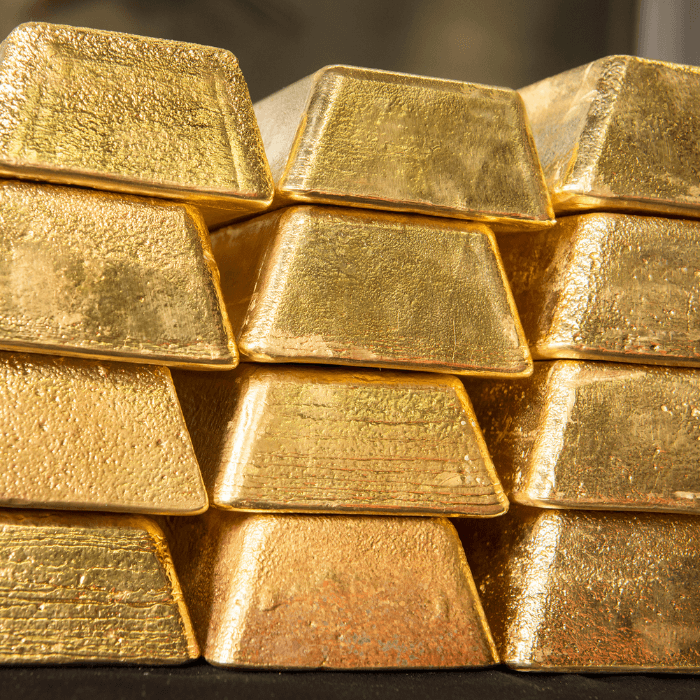Tariffs, Premiums and Leasing
The Royal Mint
Market News

The second coming of President Donald Trump has already brought plenty of policy change and market volatility. The main issue making headlines centres around trade tariffs placed on key US trading counterparties: China, Canada and Mexico.
Last Tuesday (4th March), the first round of 25% tariffs were imposed on Canada and Mexico, with a potential 10% tariff to be levied on Chinese imports. This move has come off the back of weakening US economic data, and a depreciating US dollar since the turn of the year. The US benchmark equity index, the S&P500, has also fallen 6% from its February high amid rising recession concerns, and on Monday suffered its largest single day drop since mid-December.
So, what does this mean for gold?
Since Trump’s trade tariffs entered the discourse, a price differential has opened up between New York and the London (LBMA) prices quotes, specifically reflecting in the pricing of gold futures contracts. Large bullion (investment) banks have therefore been settling gold futures contracts in (relatively) cheaper physical gold from London, which has seen billions in bullion flown over to New York, and, resulted in an arbitrage (risk free) profit for those banks.
This arbitrage trade flow has many UK investors asking, ‘what does this mean for my gold investment – is it safe?’
At The Royal Mint, all individual bar and coin investments vaulted with us carry a serial number and are segregated and fully allocated.
These investments are your property (or that of your company or pension scheme), and The Royal Mint does not benefit from the use of these investments in any way, and they are categorically not used in any way to furnish other investments. There is no rehypothecation (Rehypothecation | eCapital).
Some bullion banks, however, will reserve the right to use your gold holdings as collateral for their own means. Hence why investors are so drawn to the non-bank custody and operations of our regional mint.
Whilst increases in demand for London’s physical bullion stocks is yet to materialise in any supply shortages, it does increase the lease financing costs levied on bullion dealers and manufacturers, which can ultimately translate into higher premiums being charged on bullion investments.
Since January, gold leasing rates have soared, leading to increased finance costs for gold dealers. This has therefore prompted dealers to focus on inventory management and stock turnover. This can itself lead to supply shortages, at the margin, particularly when we see short term impulses in demand.
As supply tightens, bullion dealers may be compelled to increase the price premiums they charge on bullion investments, to efficiently smooth out surges in demand. Whilst bullion premiums at The Royal Mint are yet to see this feed through, should leasing costs remain elevated, there is every likelihood that premiums would increase commensurately.
To learn more, see The London ‘Gold Shortage’ | The Royal Mint
What will be the resultant effect of the proposed Trump trade tariffs?
The consensus is that trade tariffs will act as a drag on the US economy (at least in the short term), and this has been reflected in both US small business and consumer confidence. The consumer confidence index fell sharply in February and exhibited its biggest monthly decline in almost four years. The reason for the drop in optimism was cited as sticky inflation and the increased fear that a US trade war (tariffs) is likely to lead to a near-term recession. Indeed, both Citibank and Goldman Sachs have downgraded US growth expectations this week. It’s important to note that consumer spending accounts for around two-thirds of the US economy.
The resultant effect of trade tariffs on the gold price depends on a number of factors. However, increased uncertainty and risk of recession, and the likelihood of stickier inflation and a weaker dollar should, in theory, see ever increasing demand for perceived safe-haven assets such as gold. With the (GBP) gold price up nearly 10% already this year, and around 36% higher over the last year, it certainly indicates unwavering interest in the yellow metal.*
Here, at The Royal Mint, we recorded a second consecutive record quarter for coin sales in January, up 197% compared to the same quarter last year, and up 56% on Q3. This performance can largely be explained by changes the capital gain tax (CGT) regime, and global economic uncertainty. Bullion coins have the unique feature of being exempt from CGT, as they are deemed legal tender, and as such, have seemingly provided an attractive feature for those looking to diversify portfolios, and mitigate tax.
If you’re looking to expand your bullion coin investment portfolio, our comprehensive gold and silver bullion collections encompass a wide range of options, including meticulously crafted gold bars and gold coins. See our Invest page for more details.
Notes
The content of this article is accurate at the time of publishing, is for general information purposes only, and does not constitute investment, legal, tax or any other advice. Before making any investment or financial decision, you may wish to seek advice from your financial, legal, tax and/or accounting advisers.
This article may include references to third-party sources. We do not endorse or guarantee the accuracy of information from external sources, and readers should verify all information independently and use external sources at their own discretion. We are not responsible for any content or consequences arising from such third-party sources.
*The information provided is accurate as of 4:30 PM on March 13, 2025.
Sources
US stocks face tricky moment as Trump's latest tariffs land | Reuters
Trump tariffs: Why is JPMorgan flying gold from London to NYC? | Fortune
Stocks fall as Trump warns of US economy trade war 'transition' - BBC News
FTSE 100 Live: London stocks resume slide, Debenhams returns, US growth downgraded | LSE:PSN









